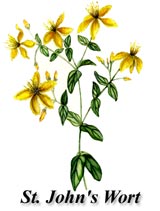Many pharmaceuticals were originally derived from plants, including:
- Aspirin
- Digoxin (used for congestive heart failure)
- Oral anticoagulants (blood thinners)
- Some antiparasitics (used to kill parasites) (Fugh-Berman, 1997).
In addition, about 25 percent of all pharmaceutical drugs still include some plant-derived constituents.
So it is not surprising that botanical medicines often work in the body in ways that are similar to pharmaceutical drugs.
How do they work?
Like pharmaceutical drugs, botanical medicines adhere to principles of pharmacodynamics and pharmacokinetics. These are the scientific words for the study of how drugs interact with bodily systems.
- Pharmacodynamics is the study of drugs and their actions on living organisms. This science studies how drugs act on the body.
- Pharmacokinetics is the study of how the body digests, distributes, and excretes particular drugs. It looks at the time required for absorption, duration of action, distribution of drug in the body, and method of excretion. In other words, this science studies how the body acts on the drugs.
So, as with pharmaceuticals, scientists study how the active components in a particular botanical is absorbed, distributed, and metabolized in the body and then excreted. They also study the pharmacological activity-the effect the botanical has in the body. All this helps scientists understand the mechanism of action-where the drug goes in the body, what it does, and how that impacts the individual's health.
Like many pharmaceutical drugs, there are botanical medicines for which the mechanism of action is unknown.
Examples
 Here is an example of a botanical with a known or postulated mechanism of action:
Here is an example of a botanical with a known or postulated mechanism of action:
- St. John's Wort extract, used to treat mild to medium depression, has been shown to inhibit the reuptake of serotonin similar to fluoxetine (Prozac) and other serotonin reuptake inhibitor drugs. Research with Prozac and other SSRIs have shown that increasing the levels of serotonin at the nerve synapse can have ameliorative effects on depression. St. John's Wort also possesses the ability to modulate interleukin-6 activity, which may also play a role in affecting mood. Other mechanisms contributing to its antidepressant actions have been suggested, including inhibition of serotonin receptor expression and catechol-O-methyltransferase, an enzyme that degrades catecholamine neurotransmitters, which, like serotonin, are involved in the modulation of mood.
Why is synergy important?
Many botanicals are comprised of multiple active ingredients that act together (synergistically) to produce a response (Williamson, 2001). Thus, there may not be one active ingredient that accounts for all the observed effects.
This concept of synergy underlines much of the modern clinical use of botanical medicines, and there is an increasing body of evidence in support of its validity.
How do botanical medicines and pharmaceutical drugs differ?
While botanicals are like pharmaceuticals in many ways, there are important differences.
Botanical MedicinesPharmaceutical Drugs Wide margin of safety Narrow margin of safety and greater potential for adverse effects with overuse Active ingredients are diluted Active ingredients are highly purified (potency is greater) Dozens to hundreds of related compounds (also contain non-active ingredients) Usually a single active chemical or a well-defined mixture of active chemicals Often have a synergistic action Usually a well-defined, specific activityWhy are botanical medicines sometimes called dietary supplements?
Dietary supplement is a government category that determines how substances are sold and regulated. Some fast facts:
- In the United States, the vast majority of botanical medicines are classified as dietary supplements. (A few botanicals, such as digitalis leaf, are classified as pharmaceutical drugs.)
- Dietary supplements also include vitamins, minerals, amino acids, and other ingredients.
- Dietary supplements are found in many forms such as tablets, capsules, gelcaps, liquids, powders, or even a bar. They are regulated under the larger umbrella of food, not drugs.
The law regulating dietary supplements is different from that regulating pharmaceuticals. One difference is that manufacturers of dietary supplements cannot claim that they treat or prevent disease, only that their products affect structure and function.
Ernst, E. (2007). Herbal medicines: Balancing benefits and risks. Novartis Foundation Symposium, 282, 154-67; discussion 167-72, 212-8.
Williamson, E.M. (2001). Synergy and other interactions in phytomedicines. Phytomedicine, 8, 401-409.
St. John's Wort
Barnes, J., Anderson, L.A., Phillipson, J.D. (2001). St John's wort: A review of its chemistry, pharmacology and clinical properties. Journal of Pharmacy and Pharmacology, 53(5), 583-600.
Butterweck, V. (2003). Mechanism of action of St John's wort in depression: What is known? CNS Drugs, 17(8), 539-62.
Kasper, S., Gastpar, M., Müller, W.E., Volz, H.P., Dienel, A., Kieser, M., Möller, H.J. (2007). Efficacy of St. John's wort extract WS(R) 5570 in acute treatment of mild depression: A re-analysis of data from controlled clinical trials. European Archives of Psychiatry and Clinical Neuroscience, Dec 14, 2007.
Medina, M.A., Martínez-Poveda, B., Amores-Sánchez, M.I., Quesada, A.R. (2006). Hyperforin: More than an antidepressant bioactive compound? Life Sciences, 79(2), 105-11.
Wurglics, M., Schubert-Zsilavecz, M. (2006). Hypericum perforatum: A 'modern' herbal antidepressant: Pharmacokinetics of active ingredients. Clinical Pharmacokinetics, 45(5), 449-468.
Saw Palmetto
Buck, A.C. (2004). Is there a scientific basis for the therapeutic effects of serenoa repens in benign prostatic hyperplasia? Mechanisms of action. Journal of Urology, 172(5 Pt 1), 1792-1799.
Fong, Y.K., Milani, S., Djavan, B. (2005). Role of phytotherapy in men with lower urinary tract symptoms. Current Opinion in Urology, 15(1), 45-48.
Wilt, T., Ishani, A., Mac Donald, R. (2002). Serenoa repens for benign prostatic hyperplasia. Cochrane Database of Systematic Reviews, 3, CD001423.


